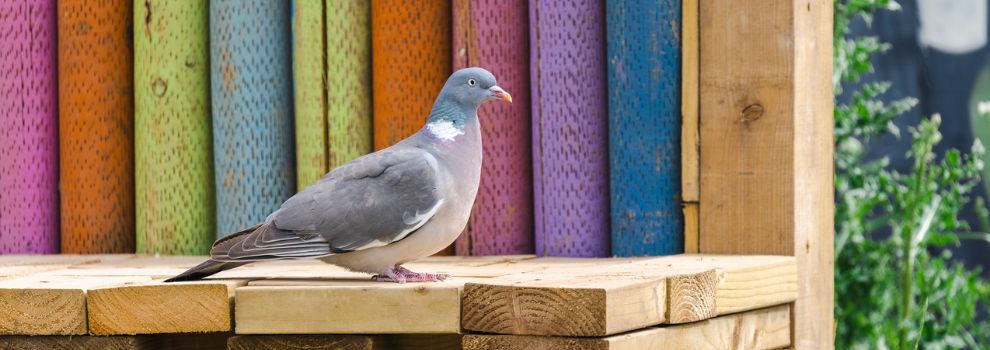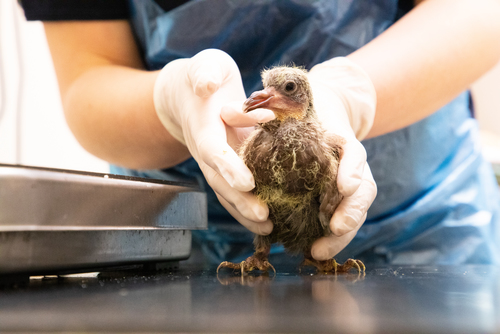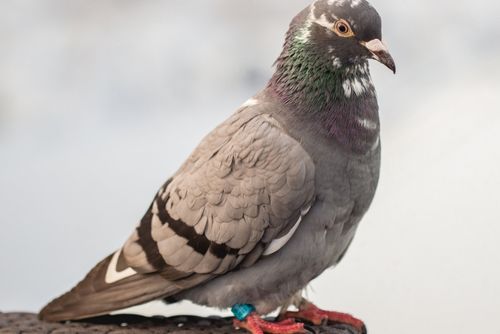- Find a Pet
- Advice and Welfare
- Ways to Give
- Get Involved
- What We Do
- Search
- My RSPCA
- Report a concern
- Sponsor
-
Colour modeVivid Calm
- Home
- Advice and welfare
- Wildlife
- Birds
- Pigeons
Pigeons
Pigeons are a common sight in our cities, towns and parks. Pigeons are descendants of doves and part of the same species family of birds.

Types of pigeons
The pigeons we most often see today are descendants of the rock dove. Humans first domesticated this breed over 5000 years ago. They were originally bred for food and trained for carrying messages. These 'feral' pigeons are now back in the wild but live alongside us enjoying the benefits of urban life.
Other species, such as wood pigeons, collared doves and stock doves are also found in growing numbers in towns and cities. The turtle dove is Britain’s rarest pigeon species, only found in rural areas and in declining numbers.
Where pigeons live
Pigeons are found in both rural and urban environments, from city centres to woodlands and a range of habitats in between. As they’re social birds, pigeons are usually seen in pairs or in larger numbers in loose flocks.
What pigeons eat
Pigeons aren’t fussy when it comes to their diet, which has helped them adapt to urban environments. They’ll feed on seeds, buds, berries, small invertebrates and also any human food scraps they can find on the ground.

When pigeons mate and lay eggs
Pigeons usually breed in the spring and summer. However, in towns and cities, pigeons may be able to breed the whole year round thanks to the constant supply of food. Their nests are made from loose twigs and leaves. They can nest anywhere from open ledges and tree branches, to holes in buildings, or even cliffs.
Once in their nest, the female bird will wait a couple of days before laying the first egg. The second egg will come within the next 24 hours to 48 hours. Usually, a total of two eggs will incubate for around 18 days. The fledglings will leave the nest in the next 25 to 29 days.
Pigeons are a protected species
In England and Wales - all wild birds, their young, nests and eggs are protected under the Wildlife & Countryside Act 1981.
It's an offence to:
- To damage or destroy the nest of any wild bird in use or being built.
- To destroy or remove any egg of any wild bird
- To take, kill or injure any wild bird or their young
The difference between racing and wild pigeons?
Coloured rings are used to signify if the bird is a show (fancy) pigeon or a racing pigeon. The rings are placed around one or both of its legs. Show pigeons have a ring number starting with 'NPA' and racing pigeons usually start with 'GB'. If you see a pigeon without a leg ring it's probably a wild pigeon.




